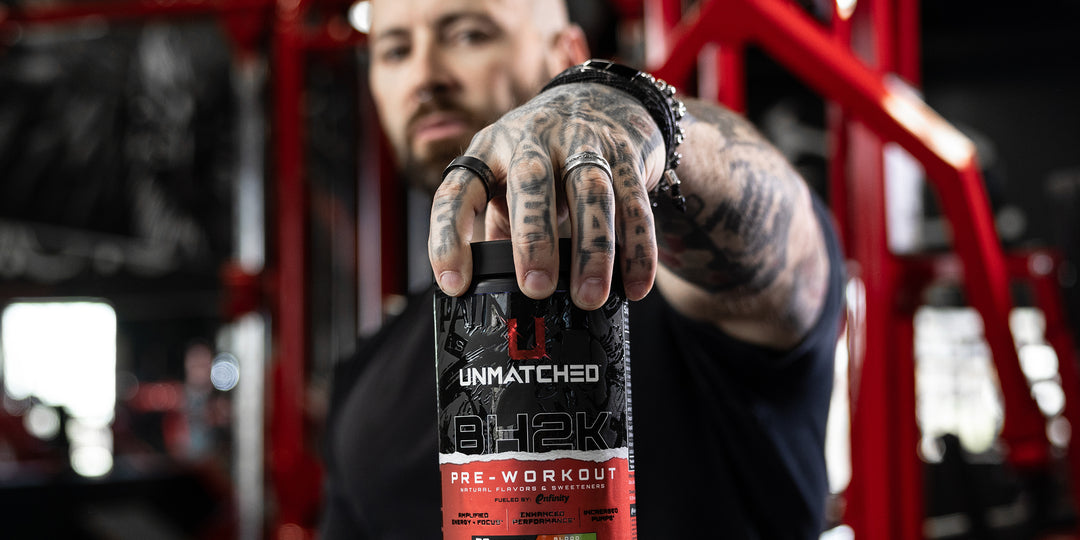Generic vs Patented Ingredients
When shopping for nutritional supplements, one of the key distinctions you may notice is whether a product uses generic or trademarked/patented ingredients. There’s generic caffeine and trademarked caffeine, generic L-citrulline and trademarked L-citrulline, generic and trademarked sweeteners, you name it.
But which one is better and when is it appropriate to use/pick one over another?
While both types can be effective, understanding the differences can help you make an informed decision about which product might work best for your needs.
Let's look into the pros and cons of each, how they are regulated, and why trademarked ingredients tend to come at a premium.
What Are Generic Ingredients?
Generic ingredients refer to common compounds that are widely available and often unbranded.
These ingredients are chemically similar to patented versions but lack the same proprietary research, branding, or marketing associated with trademarked alternatives.
For instance, if a supplement contains generic caffeine, it’s the same chemical structure as any other caffeine, but it may not have undergone the same level of rigorous testing or standardization as a patented version like PurCaf® (organic caffeine).
Now, this isn’t to say that generic versions of ingredients lack any valid clinical data and are not as effective as their trademarked counterparts.
Non-trademarked forms of ingredients can have some benefits associated with them as well and are used strategically in the formulating process of certain products.
Pros of Generic Ingredients:
- Cost-effective: Generic ingredients tend to be less costly because they don’t involve expensive patents or brand recognition.
- Widely available: These ingredients can be found in a variety of products across many brands.
- Standard efficacy: Generic ingredients can still be effective, as they are often scientifically validated and well-known compounds, like beta alanine, L-theanine or curcumin.
Cons of Generic Ingredients:
- Variable quality: The purity, potency, and source of generic ingredients can vary widely between manufacturers. So, brands need to ensure quality identification testing for purity is being performed.
- Lack of innovation: They often lack proprietary research, so the results are typically based on older, potentially outdated studies.
- Less transparency: It can be difficult to trace the origin or specific benefits of generic ingredients.
What Are Trademarked Ingredients?
Trademarked ingredients (and often ones that also hold certain patents) are specific branded ingredient innovations that have been developed and are owned by a specific company. These ingredients have typically undergone proprietary processes that may involve advanced extraction techniques, improved bioavailability, or enhanced efficacy.
They are also usually backed by one or many clinical research studies that prove their specific benefits at respective or different dosing recommendations.
Examples of trademarked ingredients include:
- Cognizin® (Citicoline) for cognitive enhancement
- PeakATP® for sustained energy and performance
- Enfinity® paraxanthine for clean energy
- AstraGin® to improve nutrient absorption
Pros of Trademarked Ingredients:
- Proven efficacy: Most trademarked ingredients are backed by one or several clinical studies, providing scientific proof of their effectiveness.
- Consistency: Trademarked ingredients are often standardized, meaning each dose contains the same amount of active compounds with consistent results.
- Innovation: These ingredients are often more advanced, benefiting from new technologies or delivery methods.
- Quality control: The company behind the ingredient often ensures it meets high standards of purity, safety, and efficacy.
- Claims: You can often times be able to make certain and specific health claims that are backed by the ingredients trademark and patents.
Cons of Trademarked Ingredients:
- Cost: Due to the proprietary research and manufacturing processes involved, trademarked ingredients tend to be more expensive.
- Limited availability: Trademarked ingredients are often exclusive to specific brands or formulations and can also be harder to source due to their processing.
As stated above, there is a benefit to using both trademarked ingredients and non-trademarked ingredients in certain products. This is part of the art of formulating and aiming to meet certain criteria to make the perfect product at the right price point for the consumer. So using a blend of both trademarked and non-trademarked ingredients is a common strategy used within the supplement industry.
What Makes Trademarked Ingredients Different?
In my opinion, the key difference between generic and trademarked ingredients is clinical backing and brand recognition. Trademarked ingredients undergo rigorous research and are often tested in human trials to ensure that they deliver specific, measurable benefits.
For example, CognatiQ®, a trademarked and patented coffee fruit extract (found in Unmatched® BH2K), has been shown in several studies to increase Brain-Derived Neurotrophic Factor (BDNF), a key protein associated with brain health. This level of research is not always present in generic equivalents.
Additionally, trademarked and patented ingredients often have improved bioavailability, which means the body absorbs them more effectively. For instance, BioPerine®, a patented black pepper extract, can significantly enhance the absorption of certain nutrients, like curcumin.
When to Choose Generic vs. Trademarked Ingredients
We discussed this briefly above but let’s summarize:
Choose Generic If:
- Budget is a concern: If you’re looking for basic supplementation, generic ingredients can offer excellent value without breaking the bank or pricing your innovation out.
- Basic nutrition is your goal: For everyday vitamins and minerals or common supplements like magnesium or vitamin C, generic ingredients are typically sufficient and have clinical backing in such forms.
Choose Trademarked If:
- You want proven results: When seeking advanced supplementation for specific health goals or claims that you want to make in a particular product, trademarked and patented ingredients can offer the benefit of research-backed efficacy.
- You're looking for quality and consistency: Trademarked and patented ingredients can offer a level of trust and transparency about their sourcing, effectiveness, and dosage.
- Bioavailability matters: For some nutrients, like curcumin or omega-3s, trademarked and patented versions can offer improved absorption and efficacy.
- Cost is not an issue.
Final Thoughts: Which One is Better?
There’s no definitive answer to which is better—generic or trademarked ingredients. From the brand side, it depends on particular goals, budget, and the specific formulation that is being considered for a particular target audience. From the consumer side, it depends as well. If you’re aiming for the highest quality with proven results and have health claims, trademarked ingredients may be worth the extra cost. On the other hand, if you’re only after basic nutritional support or are on a budget, generic ingredients can still provide value and effectiveness.
In the end, both generic and trademarked ingredients play an important role in the supplement industry, offering consumers a range of choices to suit their needs. This is why at Unmatched® we use a combination of carefully selected trademarked and patented ingredients in our products to target a specific purpose along with non-trademarked ingredients that have sound clinical data to also support their use and effectiveness.
This combination allows us to create the most premium offerings with ingredients that have been shown to be clinically effective, with your budget in mind so that you can live a lifestyle that is Unmatched!


